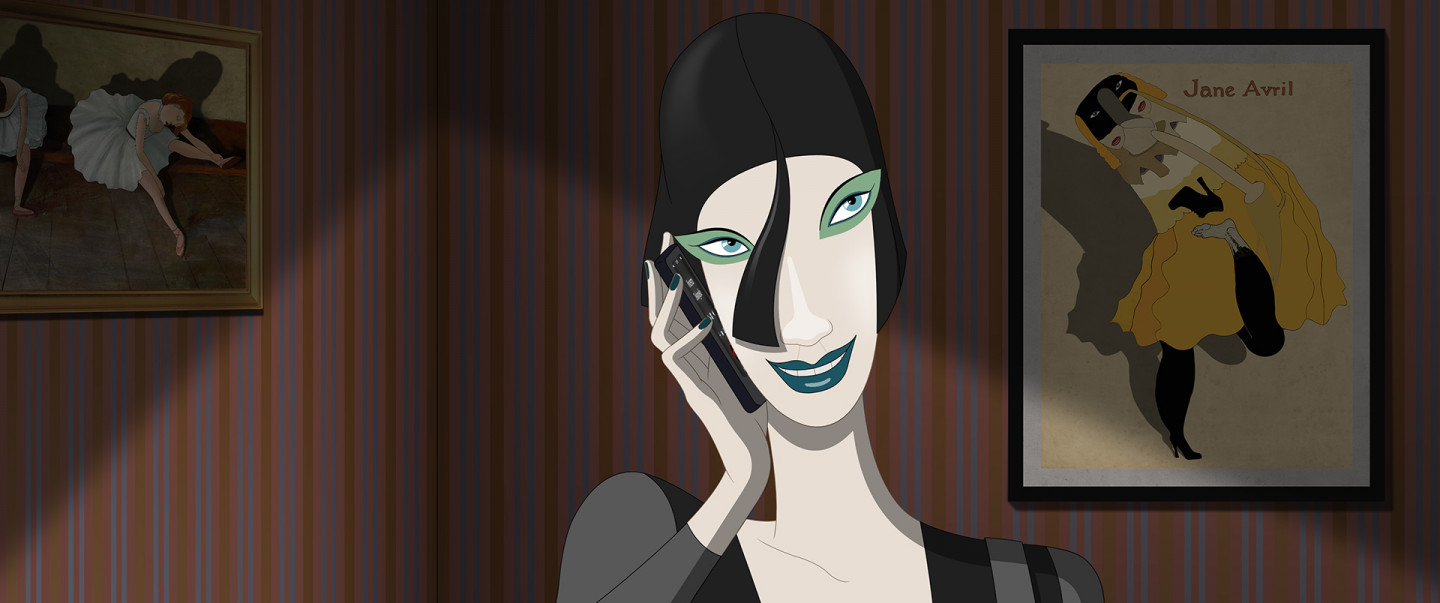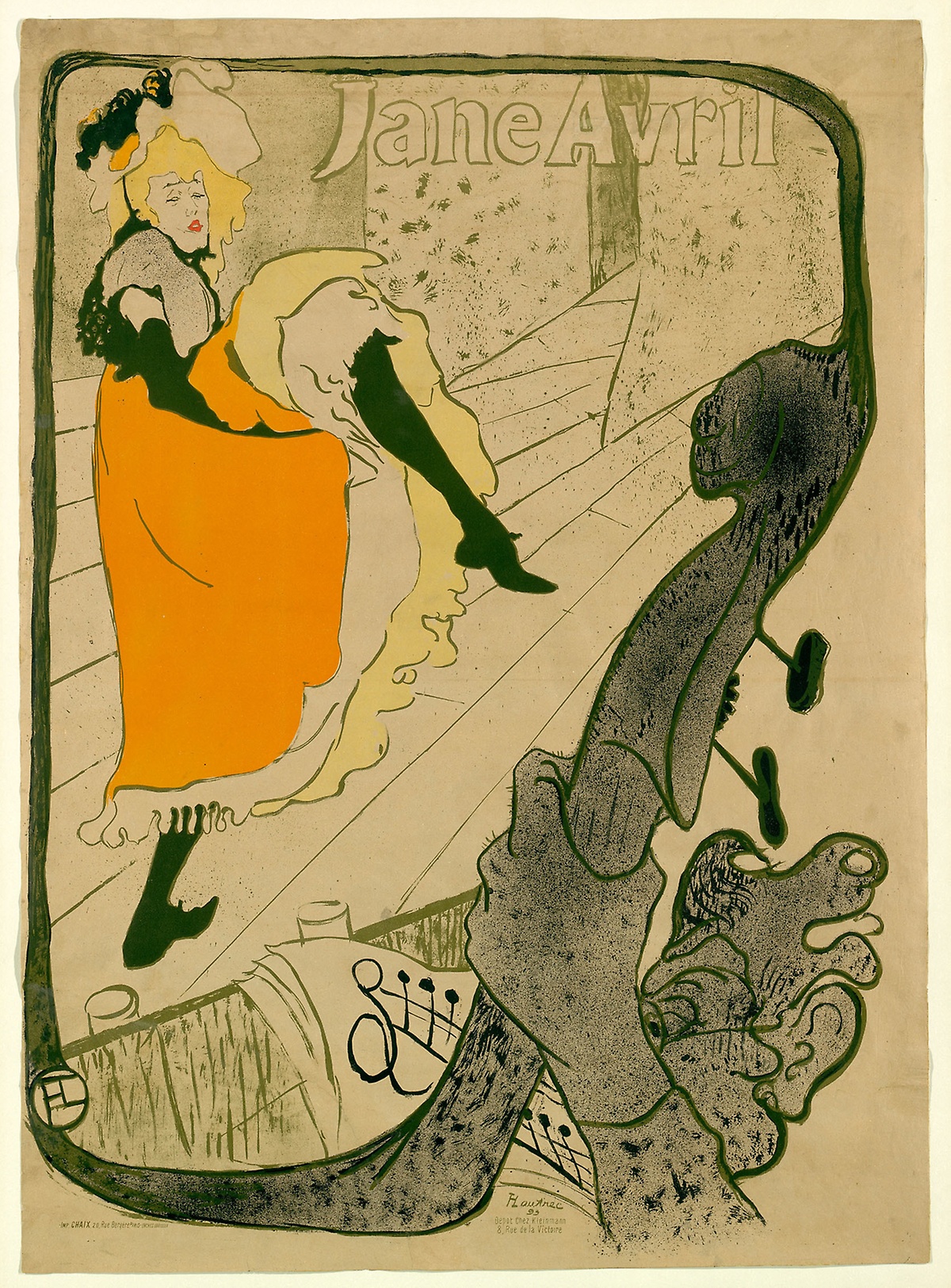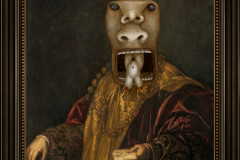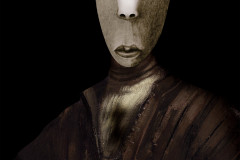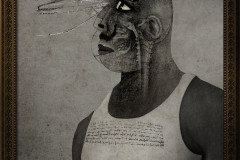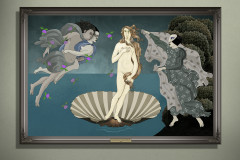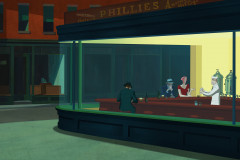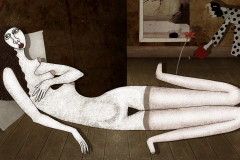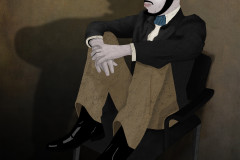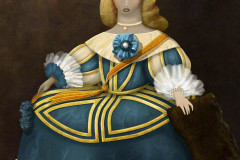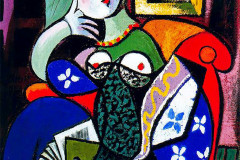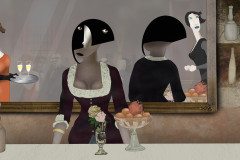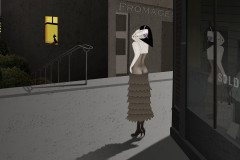Toulouse-Lautrec, Henri (1864-1901): Jane Avril, 1893. (litográfia, 130 x 94 cm), magángyűjtemény. A párizsi éjszaka, a mulatók és kávéházak festője számtalanszor örökítette meg a Moulin Rouge szólótáncosnőjét, Jane Avrilt rajzokon, festményeken, plakátokon. Szinte mindegyiken a védjegyévé vált „láblengetős” kán-kán-mozdulat látszik. A Ruben Brandtban a Mimi párizsi hotelszobájának falát díszitő verzión még a cipő is lerepül a lábáról tánc közben.
Toulouse-Lautrec, a gazdag grófi családból származó, gyerekkori baleset következtében növekedésben visszamaradt, egész életében testi fogyatékossággal élő festő sajátos alakja volt a párizsi éjszakának. Mindenhová bejárása volt, mindenki kedvelte – kicsit, mint az udvari bolondot a királyi udvarban, akinek rendszeren kívülállóként, de igencsak bennfentesként mindent szabad, megbocsátják neki az igazságot is. Mint szinte mindenkivel, a Moulin Rouge ekkor még ünnepelt, (majd időskorában szegényházban meghalt) sztárjával, Jane Avrillel is jó barátságban volt, rengeteg képet festett, rajzolt róla, amelyek közül sokat a táncosnőnek adományozott, aki azokat aztán elosztogatta szeretőinek. Ez az egyik legismertebb műve a táncosnőről, akinek élénk narancssárga ruhát viselő alakja a litográfiákra ( = kőnyomat) jellemző redukált színhasználat mellett kiragyog a képből. A művészi plakátok alkotásában úttörő Toulouse-Lautrec értett a figyelemfelkeltő komponáláshoz – első ránézésre megfog a szín és a mozdulat, de másodszorra is oda kell néznünk, hogy értelmezzük, amit látunk: a táncosnő színpadát jobb szélen-alul átlósan záró keret valójában egy zenekari csellista (vagy bőgős?) hangszerének nyaka, s egy idő után a zenész fejének és kezének szürke sziluettjét és ki tudjuk venni. Megvan?
Henri de Toulouse-Lautrec (1864–1901): Jane Avril, 1893 (lithograph, 130 x 94 cm), private collection
The painter of Parisian nightlife—cafés, dance halls, and cabarets—Toulouse-Lautrec immortalized the star can-can dancer of the Moulin Rouge, Jane Avril, in countless drawings, paintings, and posters. In nearly all of them, she’s captured mid-kick in her signature flamboyant style. In Ruben Brandt, Collector, a version of this iconic image decorates the wall of Mimi’s Paris hotel room—complete with her shoe flying off during the dance.
Born into an aristocratic family, Toulouse-Lautrec suffered from a childhood accident that stunted the growth of his legs, leaving him physically disabled for life. This physical difference, however, didn't keep him from fully immersing himself in the vibrant, often rowdy world of Parisian nightlife. He was beloved in these circles—something like a court jester, free to move between social boundaries and speak truths others couldn’t. He was especially close to Jane Avril, the celebrated Moulin Rouge dancer who ended her life in a poorhouse. Their friendship produced many works, several of which he gave to her, and which she reportedly passed on to her lovers.
This 1893 lithograph is one of his most famous images of her. Her figure, glowing in vivid orange, pops from the otherwise muted, limited color palette typical of lithography. As a pioneer of the modern poster, Toulouse-Lautrec knew exactly how to compose eye-catching designs: the bold color and dramatic movement draw us in, but the image rewards a closer look too. The diagonal black shape framing the dancer from the bottom right isn’t just an abstract form—it’s the neck of a double bass or cello, and if you look carefully, you can make out the gray silhouette of the musician’s head and hand. Did you spot it?






